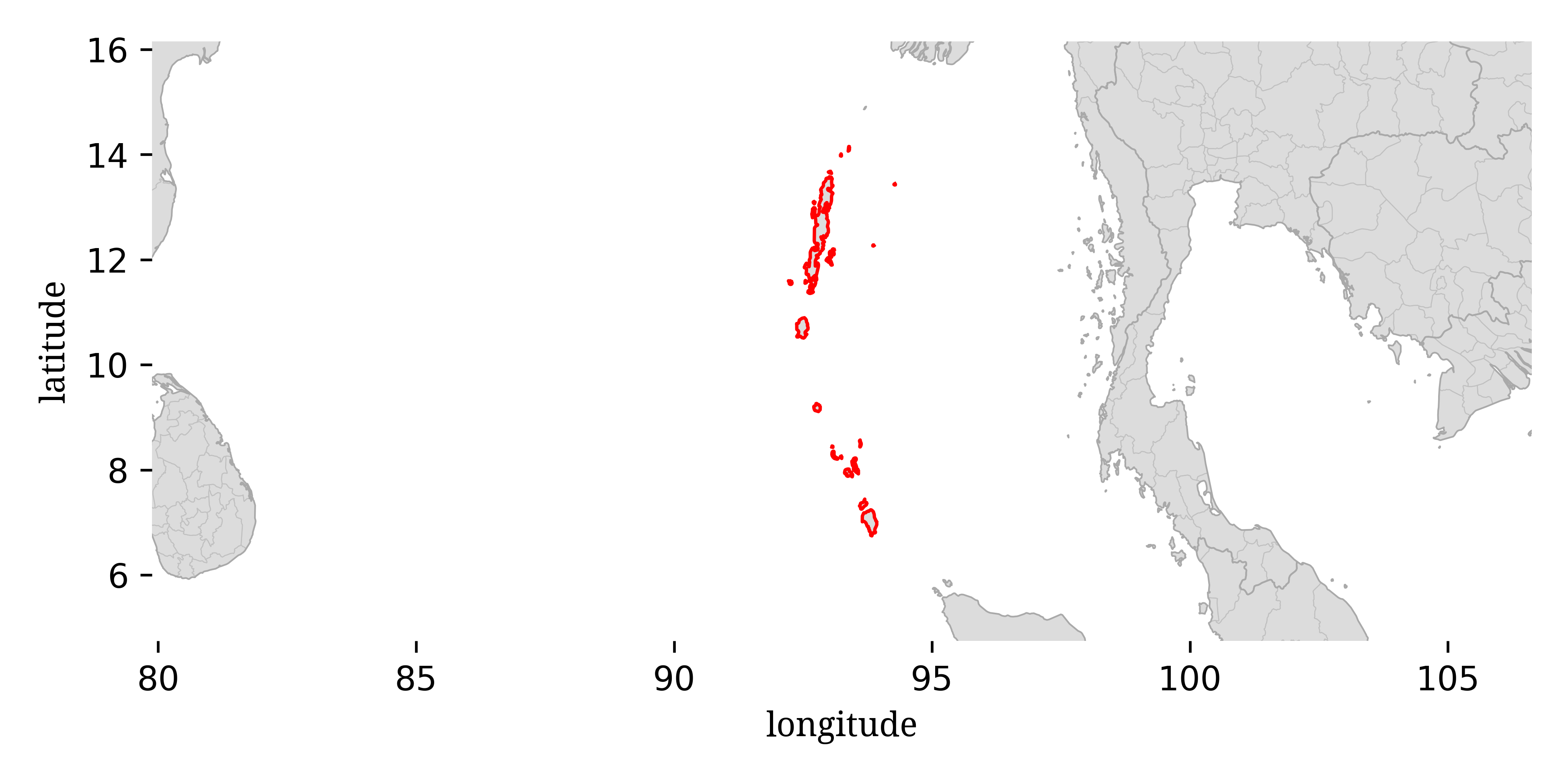
This guide is designed for identification “in the field” where you might be looking at live crabs by eye or through binoculars or from photographs. I will generally try to avoid characters that will require you to physically catch the crab, although I may mention a few for secondary verification. It does not include the more strict taxonomist-style characters that may only be visible under a microscope or via dissection. It is also assumed that the individuals are living, as death (and even capture) can cause dramatic color change.

This is a guide to the fiddler crabs of the Andaman and Nicobar Islands. There is a bit of uncertainty as to the fiddler crab species present on these islands as they sit near an intersection of several different faunal regimes. The literature includes the names of dozes of species that have been “found” here, but in most cases it appears that these are based on out of date nomenclature or confusion among species.
Based on iNaturalist observations, five species that are definitely present in these islands are:
A few other species that might also be present will be mentioned below.
A number of features can be used to distinguish among these species, but a good place to start is to look at the distance between the base of the eyestalks. Fiddler crabs tend to split into two groups, those with the eyestalks very close together (“narrow front”) and those with the eyestalks separated a bit more (“broad front”). One of these species, Austruca annulipes, is a broad front species, while the others are narrow front species.

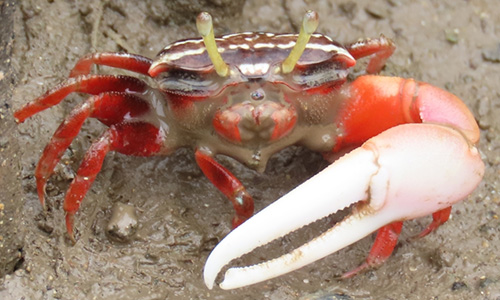
Austruca annulipes is a common, wide-spread species. Generally, the carapace of Austruca annulipes tends to be a mix of black and white. The large arm of Austruca annulipes is generally orange or red, with some of the color frequently found on the hand of the claw as well.
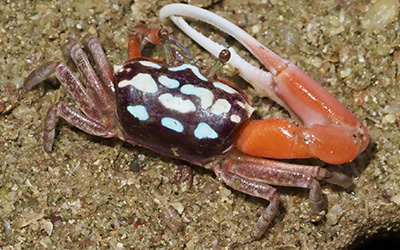

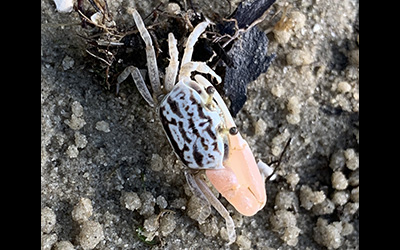
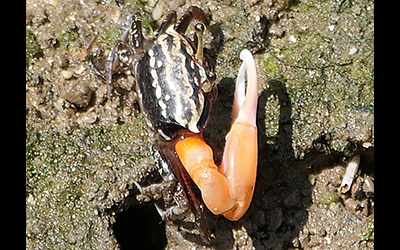
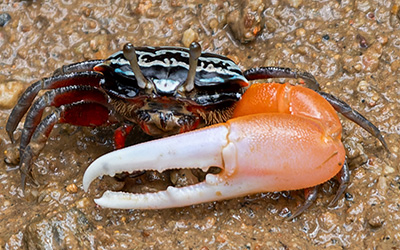
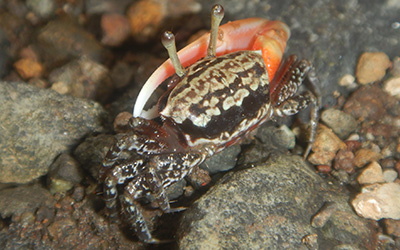
Austruca annulipes is the only broad front species definitively found in the Andaman and Nicobar Islands, but there have been previous reports of Austruca bengali. The complicating factor is a few years ago Austruca bengali was split into two species: Austruca variegata, found on the west and northern side of the Bay of Bengal, and Austruca bengali, found on the southeast side of the Bay of Bengal. If only one of these species is present on the islands, it is more likely to be Austruca bengali given how much closer they are to its known range versus that of Austruca variegata, but without any observations to work from, we do not know for certain which (if not both) of these species may be present.
Both of these species are readily distinguishable from Austruca annulipes by color pattern and carapace shape.
Historical reports tend to refer to Gelasimus vocans in these islands, but evidence suggests these references are probably all to Gelasimus hesperiae. The two species are extremely similar and difficult to tell apart; of the few iNaturalist observations on the islands that are one of these, those that can be identified to species are all Gelasimus hesperiae. Gelasimus vocans is primarily found in the western Pacific Ocean, and while it likely does reach the western side of the Malay Peninsula, probably does not extend this far west. For now I am assuming that Gelasimus hesperiae is the only of these two species present in these islands.
Gelasimus hesperiae is a narrow front species with a white or pale greenish-brown carapace and a distinctively shaped large claw. It never has any blue and should be readily distinguishable from all of the other species. The dactyl on the large claw is usually white or pink, while the rest of the claw usually ranges from orange to pale yellow. The dactyl is relatively thick and straight for about half its length before clearly curving to a thick point. The pollex will frequently have two very clear large teeth, one about midway along the length and one near the tip, although one or both can be absent. Like Tubuca alcocki, it has large bumps (tubercles) on the hand of the claw and will often have a noticeable groove along the base of the pollex.

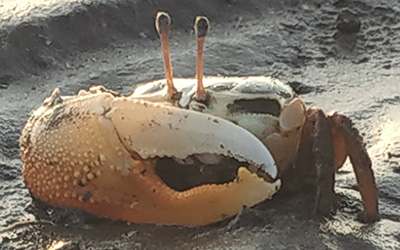
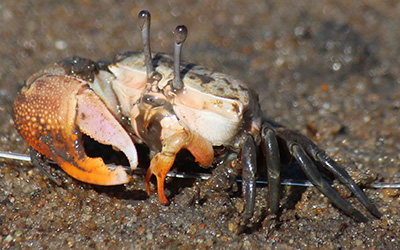

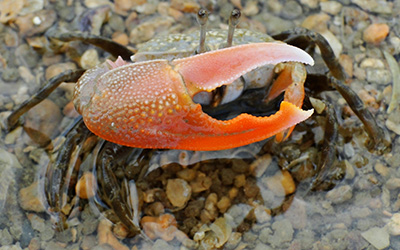
Gelasimus tetragonon is a species widely spread among oceanic islands that occasionally is found on continental shorelines. A narrow front species, it should be easily distinguishable from the other two narrow front species by color. Gelasimus tetragonon tends to have a predominantly blue and black carapace, frequently speckled, and bright red legs (which occasionally may be darker). The large claw is generally orange, with a noticeably darker red spot near the base of the pollex. The dactyl (upper finger) is usually mostly white. Gelasimus tetragonon frequently has brown spots on the top part of the hand of the claw.
Gelasimus tetragonon has a lot of variability that can overlap with the other local species. In some cases, its carapace can lighten so that there is almost no blue, just a cream or pale orange with black markings. The pattern of the colors on the carapace can vary from stripes or blotches to tiny spots.


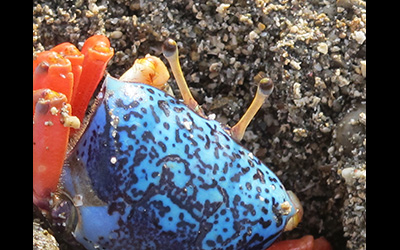
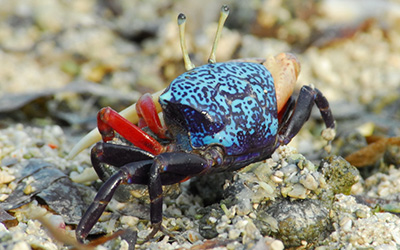
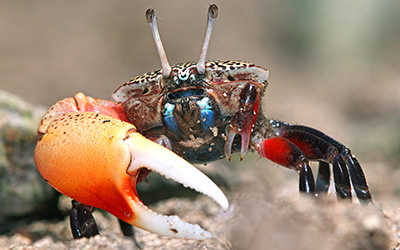
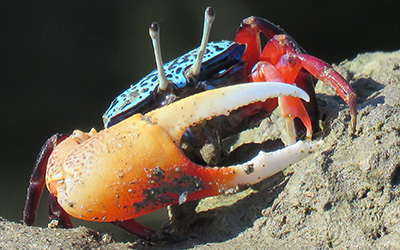
Although both Gelasimus tetragonon and Tubuca alcocki are predominantly blue, Gelasimus tetragonon tends to have bright colors while Tubuca alcocki tends to have duller shades (juveniles not withstanding); the shape, structure, and color of the large claw is also very different between the two species.
Tubuca coarctata has never been reported in the scientific literature from these islands, but there are numerous observations of this species on iNaturalist; I suspect that it has likely been misreported under one or more other names.
Tubuca coarctata is a highly variable narrow front species. The most common carapace pattern in Tubuca coarctata is a mostly black carapace with some spots of pale blue, yellow, red, or white. In many cases, however, individuals may have carapaces that appear nearly solid of any of these colors or consist more of two-toned stripes of two of these colors (the latter pattern might be more common in females than males).
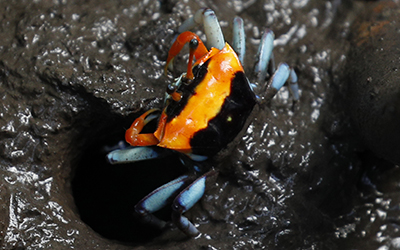
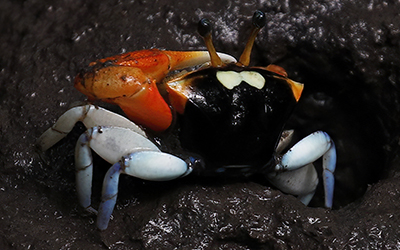
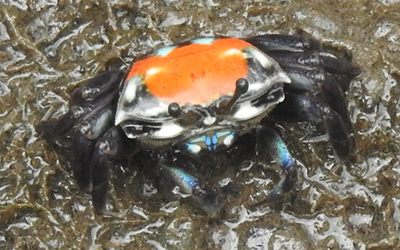
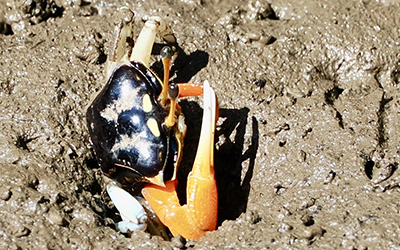
The legs of Tubuca coarctata generally follow this same color variation as the carapace, although the two rear legs generally have a large distinct, pale blue (sometimes almost white) blotch on the rear of the the top segment. This color will sometimes spread beyond this segment.
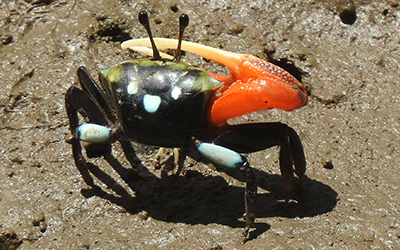
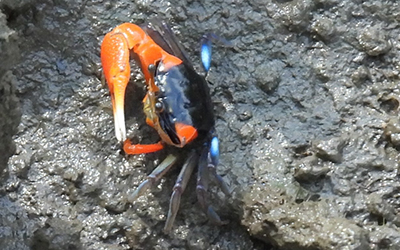

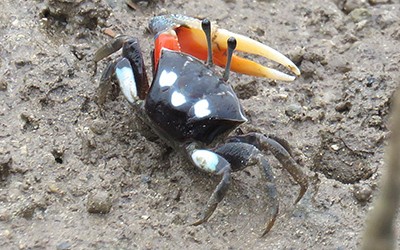
The large claw usually has a red or orange hand, with most of the upper finger and the outer half of the lower finger white. Sometimes the white will bleed further onto the upper part of the hand. There is also usually a darker red patch at the base of the lower finger (as is common in many other species). The prototypical male Tubuca coarctata has a distinct an obvious flat edged projection along the lower portion of the tip of the upper finger of the large claw. In some individuals this feature is more subtle, while other species may have a claw shape that is at least somewhat similar, although within this region this shape is more-or-less unique to this species.
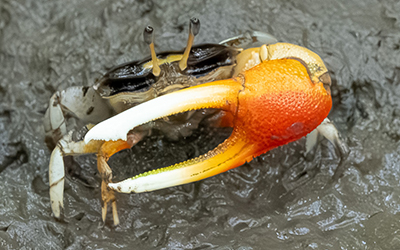

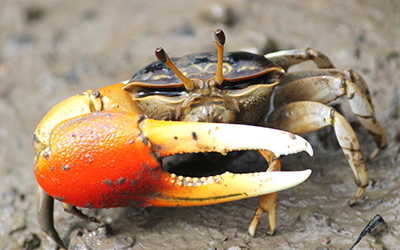

Adult Tubuca alcocki tend to have solid colored, dull, dark blue or brown carapaces, with a large claw with pale, off-white fingers, and a darker hand in dull brown or orange.



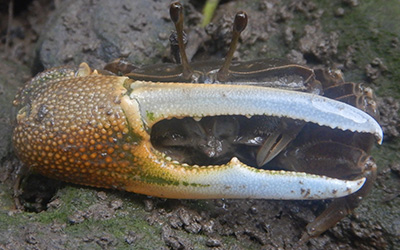
Younger and smaller Tubuca alcocki tend to be much more brightly colored. Their carapace may be more molted, rather than a single solid color, with bright blues, blacks, and some white mixed together. The colors on the large claw are also frequently brighter in color than those on the largest adults.

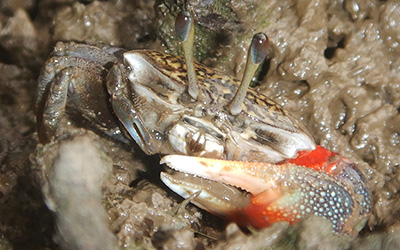

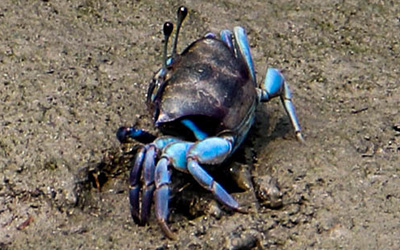
The fingers of the large claw tend to be much straighter and less curved than in the other species, frequently with noticable grooves along them. In the largest individuals, the fingers may be extremely long relative to the size of the hand.
Most of the other species reported from these islands are likely errors due to confusion with either Tubuca coarctata or Tubuca alcocki. It is conceivable that species such as Tubuca paradussumieri or Tubuca rosea might be present in the islands, but without better evidence of their presence, I am leaving them out of the field guide at this time.